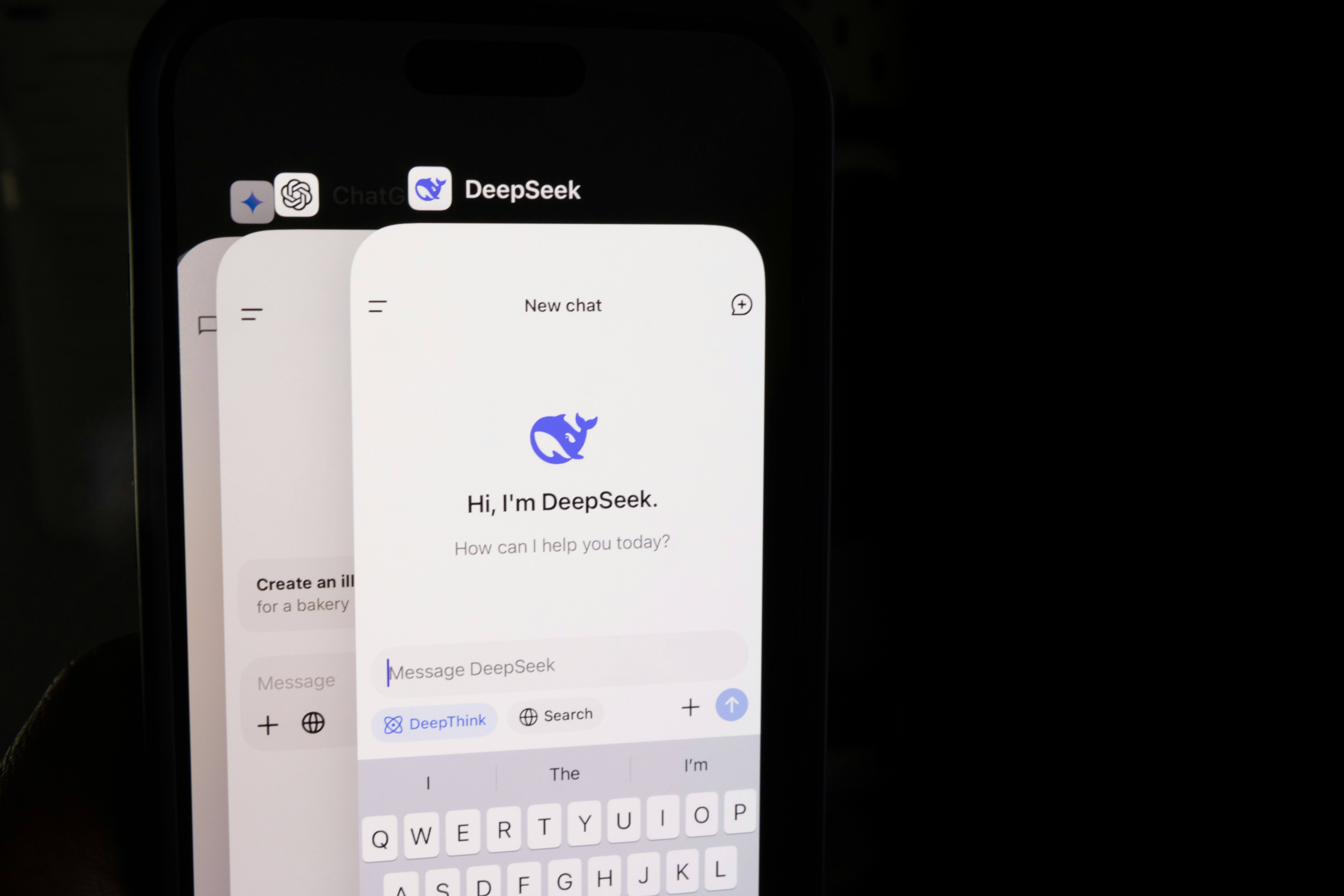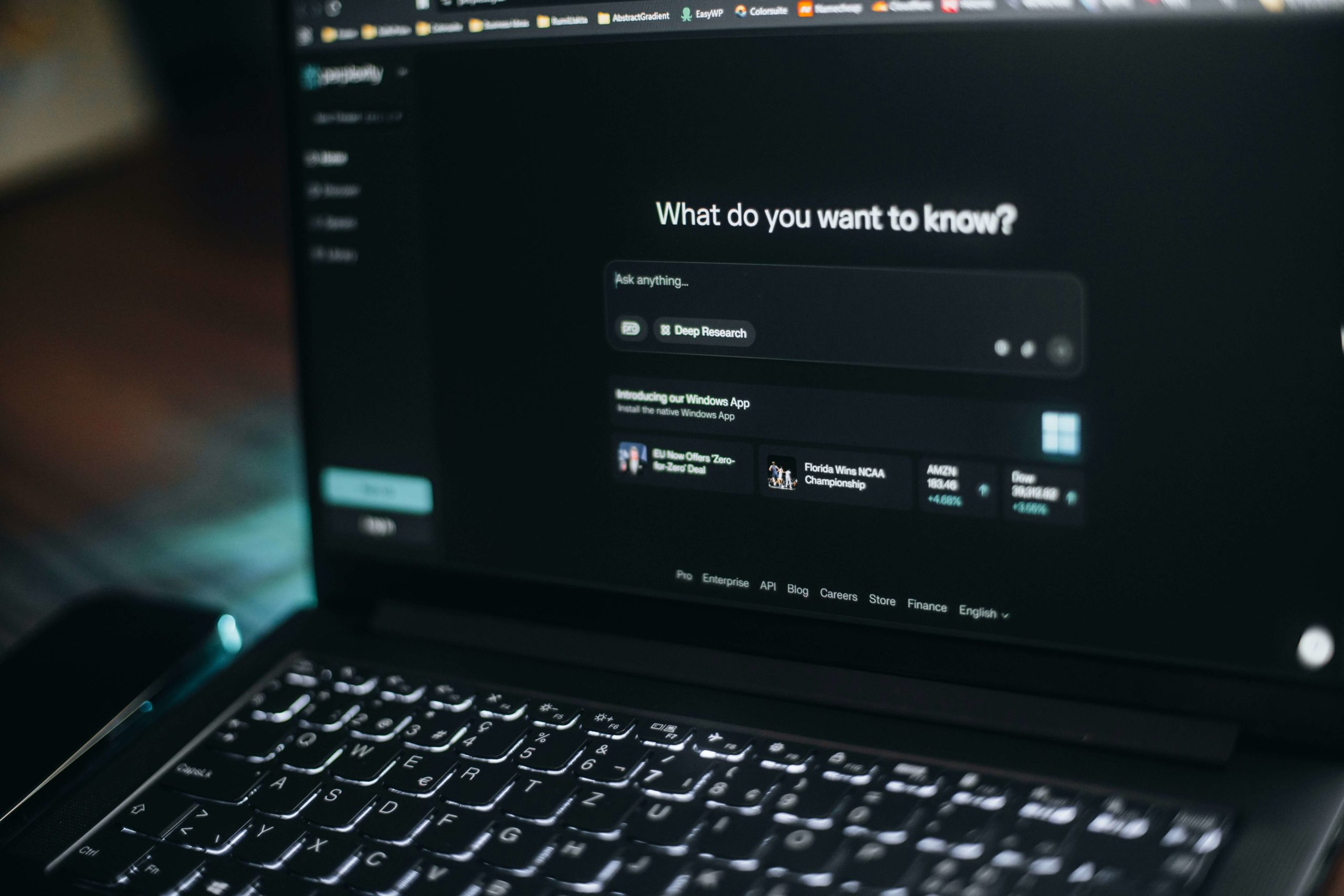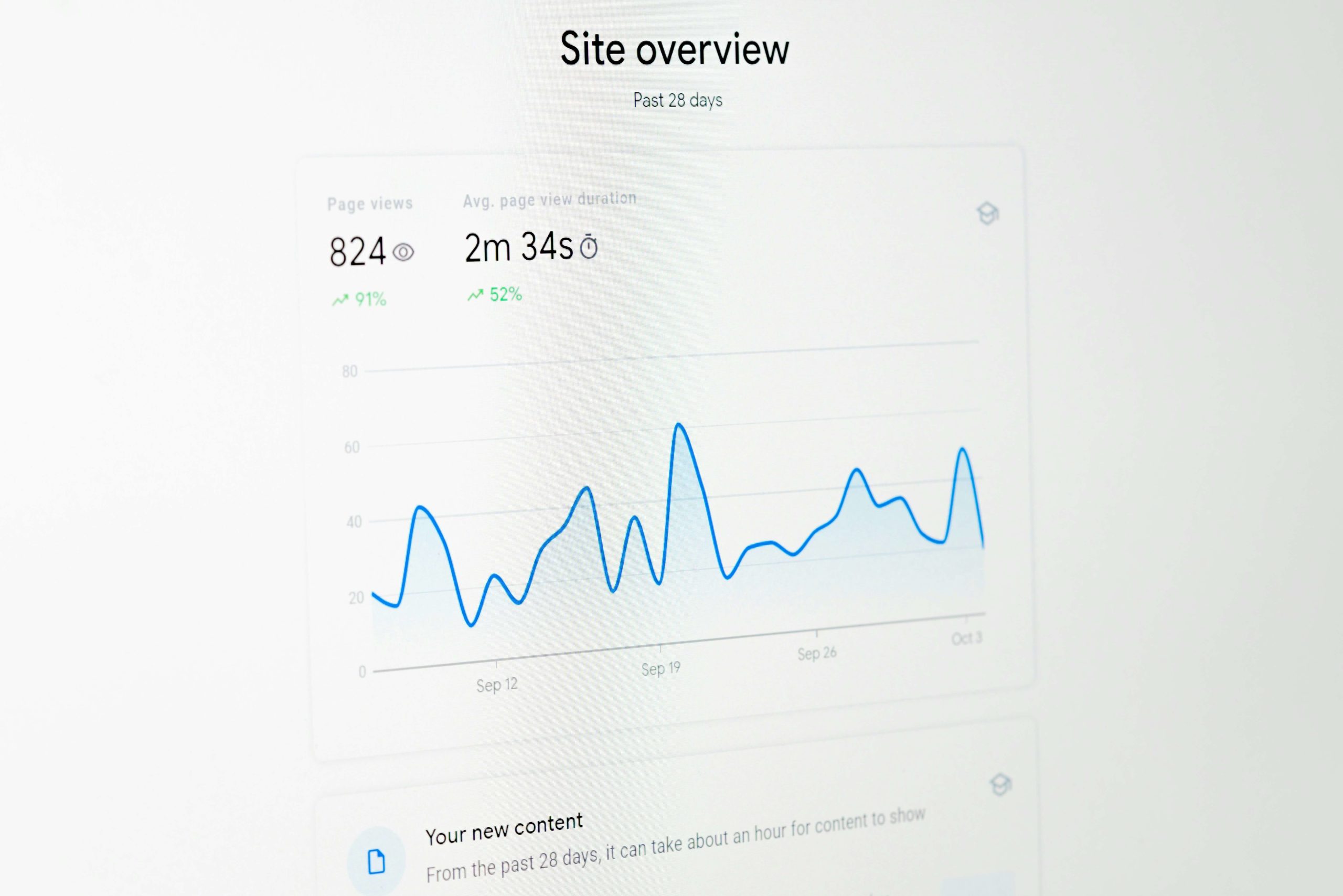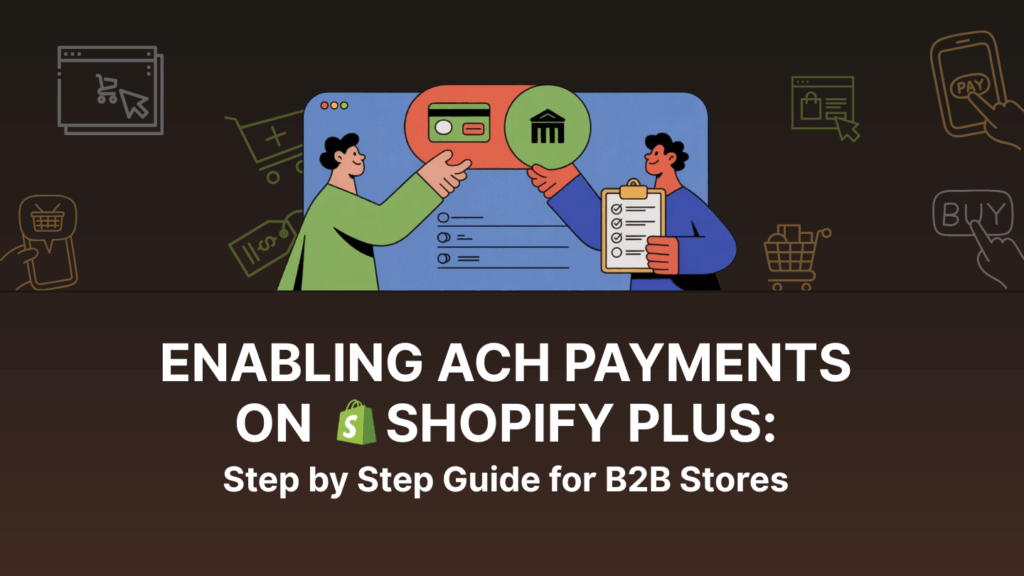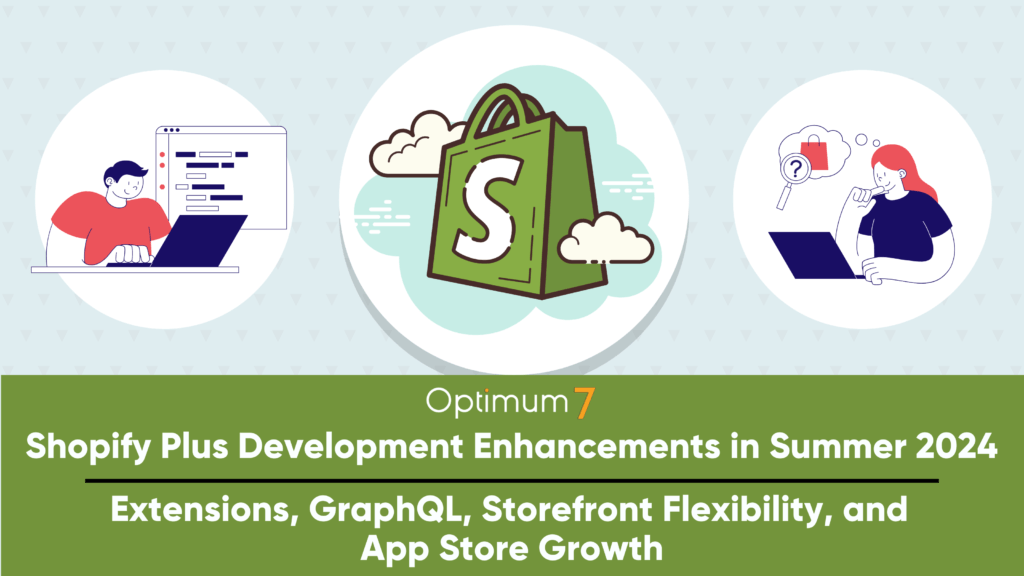The Search Shift Nobody Saw Coming
It doesn’t happen on Google anymore.
A procurement officer sits down to source a new vendor, maybe it’s a precision fastener for aerospace, maybe a specialty valve for a water treatment plant. Five years ago, customer searches started in Chrome with string of keywords, ten pages of results, and endless filtering. Today, they type a question into ChatGPT:
“Who are the top suppliers for corrosion-resistant valves that meet ANSI standards?”
In seconds, an answer appears — often a neat, confident list of suppliers. Sometimes it even includes contact details or rough pricing, drawn from whatever data the AI models have seen.
And here’s the part that stings: your company isn’t on the list.
Not because your products don’t qualify. Not because your pricing isn’t competitive. You’re invisible because your catalog, your pricing logic, and and your portal—none of it is structured in a way the AI can understand or recommend.
For small and mid-sized B2B manufacturers, this is the new reality. Visibility used to mean winning shelf space in a retail space or page one on Google. Today, it means being named when a buyer asks an AI assistant for help. If you’re not in that answer, you’re not even in the running.
This shift has already started. Engineers and procurement teams are leaning on ChatGPT, Gemini, Perplexity, and private procurement assistants because they save time. They don’t want to scroll; they want a shortlist, and those tools will happily provide it, but only if your products are visible to them.
The game has changed. The question isn’t “How do we rank higher?” It’s “How do we get recommended by AI?”
And for smaller B2B suppliers, the path forward is clear: structure your data, expose your quoting logic, and build AI-readable portals that make your products discoverable. The companies that do this now will still be in the conversation five years from today. The ones who don’t will wonder why the RFPs stopped coming.
Why Buyers Are Moving From Google to AI Tools
Talk to anyone in procurement, and they’ll tell you: Google is noisy. A single search for a specialized part brings back thousands of results—half of them irrelevant, many of them from distributors who don’t even stock the item anymore. Clicking through ten tabs just to find one usable lead isn’t research; it’s exhaustion.
That’s why the shift to AI platforms and tools feels so natural. Instead of wrestling with keywords and filtering through SEO tricks, buyers can ask a direct question and get a shortlist.
“Show me suppliers for stainless steel fasteners rated for marine use.”
“Find component vendors in North America with ISO 13485 certification.”
What used to take an afternoon of searching and emailing now takes seconds.
It’s not just convenience. For procurement teams under pressure, AI tools cut straight to the heart of their job: speed and confidence. They can validate vendor options faster. They can draft sourcing reports without combing through dozens of PDFs. They can impress leadership with answers that come in minutes, not days.
Engineers use AI the same way. Instead of digging through outdated catalogs, they feed design requirements to ChatGPT or Gemini and get recommendations that at least point them in the right direction. These tools are quickly becoming the first touchpoint in the buying journey—the place where suppliers get filtered in or out long before a sales rep ever hears about the project.
The important part for small and mid-sized B2B companies: this shift isn’t theoretical. It’s already happening. Buyers don’t announce it, but they’re leaning on AI in pilot programs, in sourcing research, and in early design work. And every time they do, the suppliers that show up in the answer gain ground. The ones who don’t are erased quietly, without ever knowing they were being considered.
The Target Audience: Why Small and Mid-Sized B2B Suppliers Are at Risk
For decades, smaller B2B manufacturers and suppliers survived by carving out niches. You didn’t have the marketing budgets of the global giants, but you had sharper expertise, tighter relationships, and catalogs full of products big distributors overlooked. If a buyer searched long enough or knew the right industry keywords, they could find you.
AI changes that math.
Large, well-known brands already dominate the data these models were trained on. Their product information is structured, public, and everywhere. When an AI system is asked to recommend suppliers, those companies come up first, not because they’re the best fit, but because their data was the easiest for the model to learn. AI tools can only recommend what they can access—structured, visible data either on the public web or through integrated procurement feeds.
Meanwhile, the mid-sized supplier with the better pricing, the faster lead times, or the exact right part doesn’t even appear. Why? Because their catalog is still locked inside flat PDFs. Their pricing logic sits behind emails and Excel sheets. Their buyer portal looks fine to a human, but to an AI, it’s a blank wall.
That’s the painful part. These companies don’t lose because their products aren’t competitive. They lose because their data isn’t visible to the systems buyers now rely on to make decisions. The RFPs never land in their inbox. The buyers never even know they exist.
And here’s the kicker: the buyers aren’t going to change their process back. They won’t abandon AI because a supplier is hard to find. They’ll just move forward with whoever shows up first.
For small and mid-sized suppliers, invisibility isn’t a slow decline. It’s a cliff. If you’re not structured for AI today, you may already be falling behind in ways you won’t notice until contracts quietly stop renewing.
How AI Procurement Assistants “See” Your Products
The hardest part for most suppliers to accept is this: AI doesn’t read your website the way a buyer does. It doesn’t scroll. It doesn’t flip through PDF catalogs. It doesn’t email your sales rep for clarification.
AI looks for structured data it can parse, link, and reason about. If that structure isn’t there, you may as well be invisible. These systems rely on:
Product attributes: Dimensions, tolerances, materials, and compatibility notes—spelled out clearly, not buried in a spec sheet. If you only publish PDFs, AI tools can’t reliably extract that information.
Pricing and quoting logic: Even rough ranges or rules (“discount tiers after 500 units,” “MOQ of 100 pieces”) are signals AI can use to answer a buyer’s pricing question. If all pricing sits behind email requests, AI has nothing to work with.
Metadata and schema markup: Clean HTML product data, schema.org tags, or structured APIs make it easy for AI systems to ingest and recommend your products. Without that, your catalog looks like a black box.
Catalog consistency: If one product is listed in inches, another in millimeters, and a third with no units at all, AI will struggle to treat them as a coherent dataset. Inconsistency is invisibility.
Think of it this way: an AI procurement assistant isn’t trying to be clever. It’s trying to connect a buyer’s request with structured information. The suppliers who provide that structure show up in answers. The ones who don’t, no matter how good their products are, vanish.
That’s why mid-market suppliers are at risk. They think “our website looks fine” because a human can navigate it. But to AI, it’s unreadable noise. And in 2025, being unreadable is the same as not existing.
The Cost of Invisibility in AI-Driven Buying
When a buyer asks ChatGPT or Gemini for supplier options, there’s no “second page of results.” If your name isn’t in the first response, you don’t exist in that buying cycle.
That invisibility comes with three big costs:
1. Lost discovery
The harshest part is you’ll never know what you lost. A procurement team building a shortlist doesn’t email every vendor in the sector. They take the names the AI hands them, run quick checks, and move forward. If you weren’t in the answer, you weren’t even considered. Deals you could have won never reach your inbox, while the competitors who appear in AI results consistently boost sales simply by showing up in the shortlist.
2. Lost trust
Buyers assume if the AI doesn’t mention you, there must be a reason. Maybe you’re too small. Maybe you’re not credible. Maybe you don’t have the right certifications. None of those may be true, but perception is reality, and the perception is set by the AI’s output.
3. Lost contracts
This is where it hurts most. Imagine a $500,000 annual supply contract for fasteners. You’ve got the specs, the pricing, and the capacity. But when procurement checked, ChatGPT listed your competitor, not you. The contract is awarded, and you never even knew it was on the table.
The invisibility is silent. There’s no notification, no failed RFP alert, and no warning light on your dashboard. Just fewer opportunities, fewer renewals, and the sinking feeling that competitors are suddenly pulling ahead for reasons you can’t quite see.
And here’s the truth: it’s not because your products aren’t good enough. It’s because your catalog wasn’t structured for AI, and your brand’s visibility disappeared from the conversation before it even started. The system simply couldn’t “see” you—so it didn’t name you.
That’s the new reality. If you’re not AI-visible, you’re not just at risk of losing market share. You’re already losing it, quietly, in conversations you’ll never be invited to.
Structuring Your Product Catalog for AI Visibility
If invisibility is the problem, structure is the cure. The suppliers who show up in AI recommendations aren’t always the biggest or the cheapest; they’re the ones who’ve made their product data easy for machines to understand.
Right now, most mid-market catalogs are still built for humans: PDFs with tables, static spec sheets, or websites where the real details live three clicks deep in a poorly formatted description. That works when a buyer is willing to dig. It doesn’t work when an AI system is looking for clean signals it can parse instantly.
So what does “structured” really mean in practice?
- Every attribute spelled out. Length, diameter, material, tolerance, coating — whatever matters for your product line, it needs to live in a field that AI can read. Not in a PDF table, not buried in a drawing.
- Consistent formatting. If one listing says “1 in” and another says “25.4 mm,” you’re asking a machine to guess. Inconsistency is the enemy of visibility. Pick standards and stick with them.
- Schema markup and metadata. Tools like schema.org tags may feel like marketing tech jargon, but they’re how you tell both search engines and AI: this is a product, this is its size, and this is its price logic. Without metadata, your catalog looks flat and contextless. Schema markup doesn’t guarantee you’ll appear in AI answers, but it dramatically increases the chance your products can be parsed and considered.
- Dynamic feeds. Platforms like Shopify Plus and BigCommerce already let you output structured product feeds. Instead of relying on PDFs, generate live data streams that reflect your current catalog. That’s the kind of input AI tools can consume.
It’s not about rebuilding your catalog overnight. It’s about pulling it out of the dead formats that keep it locked away and into structures that make it discoverable. Start with your highest-volume products or your most strategic assemblies. Make those AI-visible first, then expand outward.
The more structured your data, the easier it is for AI to say your name when a buyer asks the question that decides the deal.
Making Pricing and Quoting Logic AI-Readable
Buyers don’t just ask AI tools what part do I need? They ask the next question too: what will it cost me? If your portal has nothing an AI can parse on pricing, you vanish from that conversation.
This doesn’t mean you need to post your entire contract matrix online. It means you need to make your pricing logic legible. AI tools can work with ranges, tiers, and rules; they don’t need every customer-specific agreement. What they can’t work with is silence.
Here’s what helps you show up without oversharing:
- Tiered pricing rules. If bulk orders get discounts at 500 units, spell that out in your catalog data. “MOQ: 100 units. Price breaks at 500, 1,000, 5,000.” That’s enough for an AI to recommend you when buyers ask for suppliers with volume discounts.
- Configuration-based logic. If a part’s cost depends on dimensions, material, or finish, structure those rules in a way a system can parse. “Stainless steel adds 12%. Custom bore sizes add $40 per unit.” That logic doesn’t expose your contracts, but it makes you discoverable.
- Ranges instead of absolutes. Even if your pricing varies widely, showing a realistic range signals competitiveness. “Typical orders run $4.50–$6.75 per unit depending on options.” That’s enough to put you in the AI’s answer set instead of being ignored.
- Transparency on quoting process. If you can’t publish pricing, publish how pricing works. “Quotes returned within 24 hours, with volume and contract-based discounts applied.” That tells the AI and the buyer that you’re equipped to compete.
The point isn’t to give away every number. It’s to provide enough structure so that when a procurement officer asks Gemini or ChatGPT, “Who can supply this component at scale, and what will it cost?” your company doesn’t get skipped.
Because if the AI can’t find a price signal from you, it will find one from your competitor — and that’s the name the buyer will hear first.
Beyond Catalogs: Feeding AI Procurement Tools Directly
What’s happening quietly inside large organizations is even bigger than buyers leaning on public tools like ChatGPT or Gemini. Many procurement teams are now building their own AI assistants. These aren’t public search engines; they’re private systems trained on internal contracts, preferred vendor lists, and consumption data. When a manager asks the assistant for recommended suppliers, the system doesn’t look at Google. It looks at whatever feeds it’s been given.
That shift matters for smaller suppliers, because it changes the definition of visibility. A glossy website isn’t enough. Even a clean, structured portal may not be enough. The companies that win in this new landscape are the ones that can plug directly into a buyer’s procurement stack.
That means offering product data in ways that can flow seamlessly into another company’s systems. Instead of forcing engineers to scrape your catalog, you give them access to a clean, secure feed. Instead of locking your quoting process inside a portal, you make it possible for the buyer’s assistant to request and receive structured pricing responses automatically. The suppliers who do this stop being “vendors buyers have to chase” and become “vendors buyers integrate with.”
For buyers, this is the dream: less time wasted on back-and-forth emails, fewer errors caused by miscommunication, and smoother workflows that match the speed they’re under pressure to deliver. For suppliers, the reward is much bigger than efficiency. Once you’re wired into a buyer’s procurement assistant, you’re no longer fighting to be discovered each time. You’ve become part of the default toolkit. And when competitors come knocking, you’re not so easily replaced, because you’re already embedded in the buyer’s process.
That’s the deeper layer of AI visibility. It’s not just about being named in a public answer. It’s about becoming part of the private systems where the real purchasing decisions happen.
Overcoming Common Objections from SMB Manufacturers
When you bring up AI visibility to most small and mid-sized manufacturers, the first reaction is usually hesitation. The objections sound familiar because they come from a place of being stretched thin, juggling too many priorities, and not wanting to invest in another thing that feels abstract.
The most common pushback is that it sounds too technical. Leaders imagine data scientists and machine learning engineers tearing apart their systems, when in reality, most of the work is about organizing product data that already exists. If you’ve got a catalog, you already have the foundation. The task is making it structured and consistent, the foundation not just of AI visibility but of stronger customer engagement once buyers actually interact with your catalog.
Another objection is fear of exposing pricing. In industries where contracts are negotiated carefully and margins are tight, the idea of putting any kind of pricing logic into a machine-readable format feels risky. But making your data visible doesn’t mean handing over your deal sheets. It means offering the signals that make you discoverable: minimum order quantities, bulk discount thresholds, and even general price ranges. The sensitive pieces stay private. What you’re exposing is just enough for AI systems to know you should be included in the conversation.
The third objection is the belief that “our buyers won’t use AI.” Many SMBs convince themselves their sector is too traditional, too relationship-driven, and too specialized. But quietly, it’s already happening. Engineers drafting sourcing reports are feeding requirements into Gemini. Procurement analysts are asking ChatGPT for supplier shortlists to accelerate their RFP prep. By the time a supplier realizes it, their competitors have already gained a head start.
The reality is that every one of these objections is more dangerous than the change itself. The suppliers who hold back because it feels too technical, too risky, or too early are the ones who will wake up two years from now wondering why their pipeline looks thinner. The suppliers who lean in now will be the ones those same buyers keep hearing named, over and over again, whenever they ask their AI assistant for options.
Competitive Advantage: Why Acting Now Locks In Visibility
The thing about AI-driven procurement is that it’s still young. Most teams are experimenting, piloting, testing workflows. That’s exactly why acting now matters. Whoever shows up in the early stages becomes the default recommendation. And once a buyer’s assistant has your catalog in its system, you’re not just another option on a shortlist — you’re the supplier baked into the process.
We’ve already seen this play out in practice. In a recent Optimum7 case study with SpecialistID, we applied an AI Visibility Optimization protocol to uncover how the company appeared across ChatGPT, Gemini, and other LLM-driven assistants. The initial audit showed what many mid-sized suppliers face: despite strong products and pricing, SpecialistID was frequently absent from AI-generated shortlists. By restructuring product data, layering schema markup, and converting video transcripts into structured content, the company quickly became legible to AI tools. Within weeks, SpecialistID began reliably appearing in AI answers — and once it was “learned” into those systems, it was far harder for competitors to dislodge them.
For smaller and mid-sized companies, this is the kind of opportunity that doesn’t come often. You don’t have to outspend the big names on brand campaigns or ads. You just have to make your products visible in the systems buyers are actually using. If you do it before your competitors, you’re the one the AI names first. And in this new buying environment, being named first is everything.
Think about how trust works inside a procurement team. If the AI assistant consistently ensures your brand appears when buyers ask about a category, that name starts to carry weight. Over time, it becomes shorthand for reliability: “This is the vendor our assistant always pulls up.” That reputation sticks, and it’s hard for competitors to dislodge.
Waiting, on the other hand, is the biggest risk. By the time you decide to get your catalog structured, your competitors may already be entrenched in those systems. And AI assistants don’t have infinite patience for new names. They lean toward the vendors already proven, already integrated, and already trusted. Playing catch-up in that environment is brutal.
That’s why the competitive edge belongs to the suppliers who act while this shift is still early. AI visibility isn’t just another marketing tactic. It’s the foundation of who even gets invited to bid. Get there first, and you don’t just win contracts; you lock them down for years to come.
Boost Product Visibility: Making Your Products AI-Visible
This isn’t about SEO anymore. It’s about making sure when a buyer asks ChatGPT or Gemini for suppliers, your company’s name is in the answer set. Use this toolkit as a working playbook—something you and your team can actually act on in the next 90 days.
AI Visibility Checklist
Think of this as your “pre-flight” check, a set of key metrics that show whether AI procurement assistants can actually see you.
| Item | What to Do | Why It Matters | Status |
| Structured Attributes | Every product spec (size, material, tolerances, certifications) lives in a field, not a PDF | AI can’t reliably parse flat files | ☐ |
| Consistent Units & Formatting | Pick one system (inches OR mm, never both) | Consistency = machine readability | ☐ |
| Schema Markup | Add schema.org product + offer tags | Signals to AI that “this is a part, this is its logic” | ☐ |
| Dynamic Feeds | Export catalog as live JSON/XML feeds | Lets AI tools pull up-to-date data, not static PDFs | ☐ |
| Pricing Signals | Publish MOQ, tiered discounts, or ranges | AI needs at least rules to recommend you | ☐ |
How to use it: Run through this quarterly. If you can’t check a box, assign an owner and deadline. Invisibility comes from gaps, not lack of quality.
Pricing Logic Scorecard
AI doesn’t need your deal sheets. It just needs enough structure to know you belong in the shortlist.
| Rule Type | Example | Exposed? | Notes |
| MOQ | “Minimum 100 units” | ☐ | |
| Bulk Tiers | “500+ = 5% discount” | ☐ | |
| Config Add-Ons | “Stainless adds 12%” | ☐ | |
| Ranges | “Typical $4.50–$6.75” | ☐ | |
| Quote SLA | “Quotes in 24 hrs” | ☐ |
How to use it: If you’re nervous about publishing numbers, start with rules or ranges. Silence = invisibility.
Buyer Portal AI-Readiness
Your Shopify Plus / BigCommerce portal has to serve humans and machines at once. Ask yourself:
Checklist:
☐ Do we expose APIs or feeds that output structured specs?
☐ Do quotes leave a structured footprint, not just PDFs?
☐ Do we separate sensitive info (contract terms) from visible metadata (MOQ, certifications)?
☐ Do we use role-based access so AI sees just enough, buyers see everything?
How to use it: Treat your portal as both a storefront and a data source. One view for buyers, one layer for AI.
Embedding Into Buyer Procurement Systems
The long game isn’t just being visible on ChatGPT. It’s being wired into the buyer’s private AI procurement assistant.
| Step | Action | Payoff |
| Pilot Feed | Share clean product feeds with one strategic account | Buyer sees you as easy to integrate |
| API Access | Let their assistant pull structured quotes | Reduces friction, keeps you top of stack |
| Data Governance | Document what’s shareable vs. private | Builds trust, removes objections |
How to use it: Start with your largest customer. Offer integration as a value-add. Once you’re embedded, you’re the default — and defaults are hard to replace.
From SEO to Product Visibility: Winning in AI Recommendations
The way buyers discover suppliers has already changed. They’re not scrolling through search results or flipping through printed catalogs. They’re asking AI assistants for answers — and those assistants are deciding, in seconds, which suppliers matter and which don’t.
For small and mid-sized B2B companies, that shift is brutal because it’s silent. You don’t get notified when you’re invisible. You don’t see the shortlist you were left off of. You just feel the effects: fewer inquiries, thinner pipelines, contracts drifting toward competitors who happened to show up in the AI’s answer.
The suppliers who adapt will look back on this moment as a turning point. They’ll remember the quarter they made their catalogs machine-readable, exposed their pricing logic in a structured way, and retooled their Shopify Plus or BigCommerce portal to serve both humans and AI. And they’ll connect that work to the deals that started landing again — the RFPs they weren’t getting before, the renewals that came through without a fight.
The ones who wait will keep wondering why their numbers feel softer even though their products haven’t changed. By the time they move, their competitors will already be entrenched as the default recommendations.
The question isn’t whether AI is rewriting procurement. It already has. The real question is whether your company is part of that conversation or not.
If you don’t know whether your products are visible inside ChatGPT, Gemini, or AI procurement tools, you’re already behind. The next step isn’t another SEO campaign. It’s a Product AI Visibility Audit. We’ll map how your catalogs and pricing logic look to AI today, show you the blind spots that keep you invisible, and design the fixes that put your name back in the answer set where it belongs.
Because in this new market, visibility isn’t measured in clicks anymore. It’s measured in whether the AI names you when the buyer asks.




